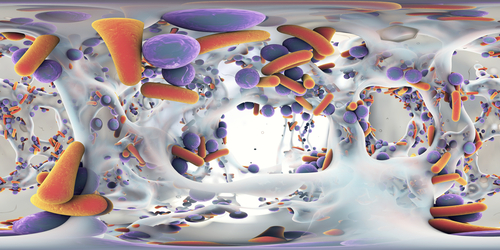WHO Lists Antibiotic Resistant Bacteria (2017)
M3 India Newsdesk Sep 07, 2017
Earlier this year, the World Health Organisation (WHO) has published a list of the 12 bacteria which pose the greatest threat to human health because they are resistant to antibiotics.

The situation is so grim that about 700,000 people around the world die annually due to drug-resistant infections and, if no action is taken, it has been estimated that such infections will kill 10 million people a year by 2050. If antibiotics lose their effectiveness, simple medical procedures and surgeries could become too dangerous to perform.
The WHO said the 12 resistant bacteria can pass along genetic material that allows other bacteria to become drug-resistant as well. The list categorises bacteria into critical, high and medium priority groups, according to the urgency of the need for new antibiotics.
Nosocomial infections that are highly resistant are a major cause of concern, in this problem. The bacteria on this list can cause severe and often deadly infections such as bloodstream infections and pneumonia. Other increasingly drug-resistant bacteria, which are deemed high and medium priority, cause more common diseases such as gonorrhoea and food poisoning caused by salmonella.
Experts' opinion
There’s an urgent and dire need to invest money and effort into researching and developing newer antibiotics that can help us deal with this situation.
The WHO also believes that this list will guide health and political authorities to devise policies to incentivise the development of new drugs.
WHO priority pathogens list for R&D of new antibiotics
Priority 1: CRITICAL
Acinetobacter baumannii, carbapenem-resistant,
Pseudomonas aeruginosa, carbapenem-resistant,
Enterobacteriaceae, carbapenem-resistant, ESBL-producing
The three mentioned above are the most critical, this group of bacteria includes multidrug resistant bacteria that pose a particular threat in hospitals, nursing homes, and among patients whose care requires devices such as ventilators and blood catheters.
Priority 2: HIGH
Enterococcus faecium, vancomycin-resistant
Staphylococcus aureus, methicillin-resistant, vancomycin-intermediate and resistant,
Helicobacter pylori, clarithromycin-resistant,
Campylobacter spp., fluoroquinolone-resistant,
Salmonellae, fluoroquinolone-resistant, Neisseria gonorrhoeae, cephalosporin-resistant, fluoroquinolone-resistant
Neisseria gonorrhoeae, cephalosporin-resistant, fluoroquinolone-resistant
This category carries other increasingly drug-resistant bacteria that cause more common diseases such as gonorrhoea and food poisoning caused by salmonella.
Priority 3: MEDIUM
Streptococcus pneumoniae, penicillin-non-susceptible,
Haemophilus influenzae, ampicillin-resistant,
Shigella spp., fluoroquinolone-resistant
This category includes bacteria that represent a threat due to increasing resistance but still have some effective antibiotic options available.
A list such as this is a bid to guide and promote research and development (R&D) of new antibiotics, as part of WHO’s efforts to address growing global resistance to antimicrobial medicines. In 2010, India was the world’s largest consumer of antibiotics for human health at 12.9 x 109 units, followed by China and US on the second and third positions. The problem gets compounded when such large scale use of antibiotics is coupled with inappropriate prescriptions, wrong indications, and indiscriminate usage. For example, in India, more than 2/3rds prescriptions of uncomplicated acute respiratory infections, fever, and diarrhea are known to contain antibiotics – indications in which antibiotics have limited value. Such indiscriminate usage is pushing us towards an era wherein hardly any antibiotics would remain efficacious. This list by WHO has again raised an alarm listing the most resistant bacteria for which newer antibiotics are urgently needed.
-
Exclusive Write-ups & Webinars by KOLs
-
Daily Quiz by specialty
-
Paid Market Research Surveys
-
Case discussions, News & Journals' summaries